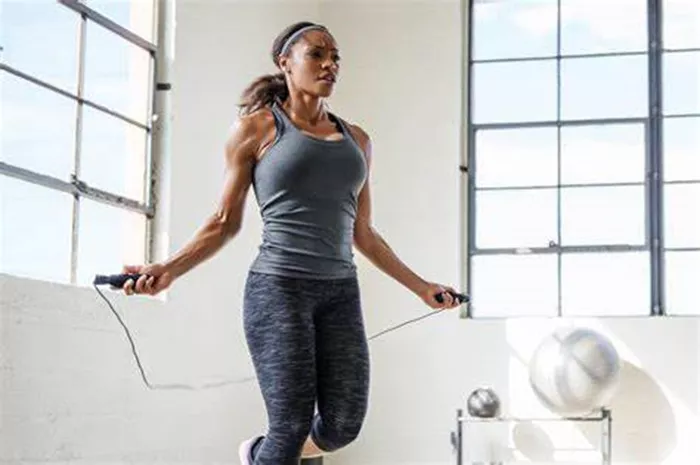Bodyweight training has become one of the most popular ways to stay fit, build strength, and improve overall health. It requires no special equipment, can be done anywhere, and suits people of all fitness levels. Whether you are a beginner or an athlete, bodyweight exercises offer an effective way to challenge your muscles and boost your endurance. This article will explore what bodyweight training is, why it works, and how you can begin your own training routine.
At its core, bodyweight training uses your own body as resistance to develop strength and flexibility. Unlike traditional weightlifting, where external weights such as dumbbells or machines are involved, bodyweight exercises rely solely on movements that engage multiple muscle groups. This form of training has been practiced for centuries, with examples ranging from ancient calisthenics to modern fitness programs. It offers a natural way to train the body without risking injury from heavy weights or expensive gym machines.
One of the biggest advantages of bodyweight training is its versatility. You can perform exercises like push-ups, squats, lunges, planks, and pull-ups in your home, at the park, or even while traveling. Because it requires minimal space and no equipment, it removes many common barriers to regular exercise. Additionally, bodyweight training can be easily modified to increase or decrease difficulty, making it suitable for people at any fitness stage. This makes it an accessible and practical fitness option.
Why Bodyweight Training Builds Strength and Endurance
Bodyweight exercises engage multiple muscle groups at once. For example, a push-up works your chest, shoulders, arms, and core simultaneously. This full-body activation helps improve muscle coordination and balance. Instead of isolating single muscles, these exercises promote functional strength—the type of strength you use in everyday activities like lifting, pushing, or climbing stairs. Developing this kind of strength reduces your risk of injury and enhances your overall mobility.
Furthermore, bodyweight training often involves dynamic movements that improve cardiovascular health. Exercises like burpees or mountain climbers increase your heart rate while strengthening muscles. This combination makes bodyweight training an effective way to burn calories and improve endurance. Over time, as you perform more repetitions or hold positions longer, your stamina increases, and your muscles become more resilient.
Another key benefit is the improvement in joint stability and flexibility. Because your body moves through natural ranges of motion during these exercises, your ligaments and tendons strengthen alongside your muscles. This balanced development supports joint health and can reduce chronic pain caused by sedentary lifestyles or repetitive motions.
How to Begin Your Bodyweight Training Routine
Starting bodyweight training requires no special gear, but it does call for commitment and proper technique. Before diving into intense workouts, it’s essential to learn correct form to prevent injury and maximize results. Watching instructional videos, attending beginner classes, or consulting a fitness professional can help you understand how to perform movements safely.
Begin with basic exercises such as squats, push-ups, lunges, and planks. These foundational moves build a solid base and prepare your muscles for more advanced exercises later. Aim for 2 to 3 workouts per week, allowing your body to rest and recover between sessions. You can gradually increase the number of repetitions, sets, or workout days as your strength improves.
It’s also important to listen to your body. While some muscle soreness is normal, sharp pain or discomfort signals a need to pause and adjust your form or intensity. Pairing bodyweight training with a balanced diet and adequate hydration enhances your fitness progress.
Common Bodyweight Exercises and Their Benefits
Push-ups are a classic exercise that strengthens the upper body and core. They improve shoulder stability and can be modified by doing them on your knees or against a wall for beginners. Squats target the thighs, hips, and glutes, supporting lower body strength and mobility. Lunges help build balance and coordination while strengthening leg muscles.
Planks focus on core stability, which is vital for posture and injury prevention. Holding a plank position engages abdominal muscles, the lower back, and shoulders. Pull-ups, although challenging, are excellent for upper body strength, especially the back and arms. If a pull-up bar is unavailable, inverted rows or resistance bands can be alternatives.
Each exercise serves a purpose, and combining them in a workout routine creates a balanced full-body session. Variety also keeps workouts interesting, reducing boredom and promoting consistency.
Tips to Stay Motivated and Track Progress
Maintaining motivation is crucial for long-term fitness success. Setting realistic goals and tracking progress can help you stay on course. Keeping a workout journal or using a fitness app allows you to record exercises, repetitions, and how you feel after each session.
Celebrate small achievements, such as completing more reps or improving form. Vary your workouts to include new exercises or different sequences to challenge your body and mind. Joining online communities or workout groups can provide support and encouragement from others with similar fitness goals.
Remember that consistency matters more than perfection. Even short daily sessions add up over time and contribute to lasting health benefits.
Conclusion
Bodyweight training offers a powerful, accessible way to improve strength, endurance, and overall health. Its flexibility allows anyone to start easily and progress at their own pace. By focusing on proper form, consistency, and gradual progression, you can enjoy a safe and effective fitness routine without needing expensive equipment or gym memberships.
Whether you want to tone muscles, lose weight, or enhance mobility, bodyweight training can be tailored to your needs. Embrace this natural form of exercise and discover how your own body can be your best workout tool.
Related Topics

































